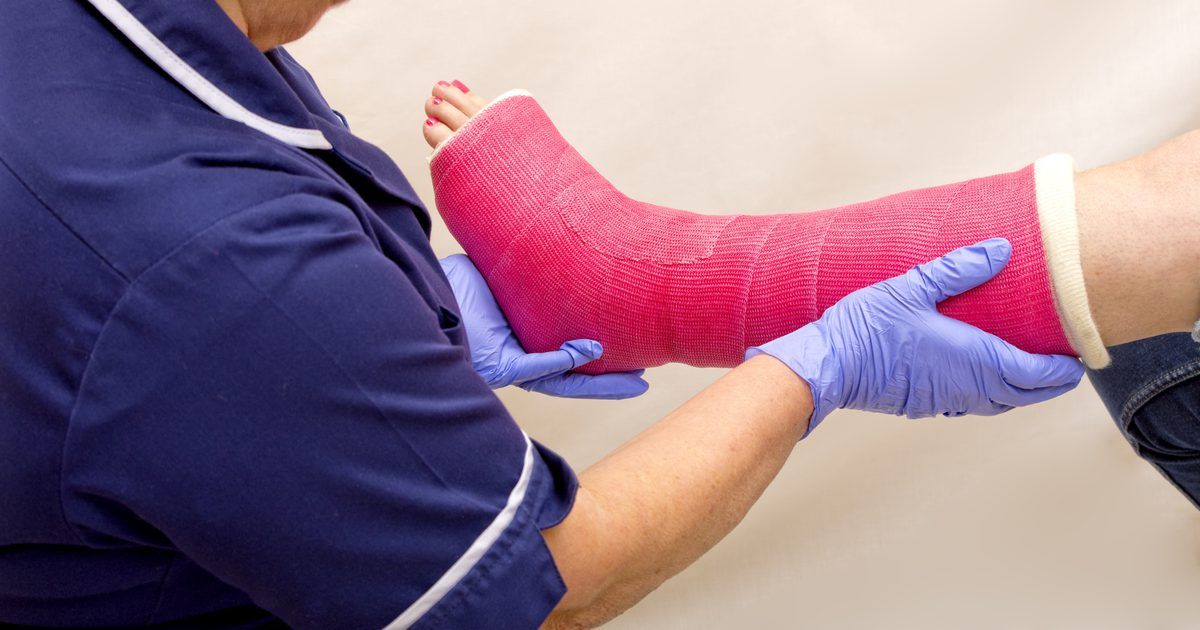How To Diagnose And Treat Compartment Syndrome
Compartment syndrome is a condition characterized by a build-up of pressure inside of one of the compartments in an individual's body separated by the fascia or tough connective tissue membrane. The fascia functions to hold all of the individual's tissues and organs in their respective places throughout the body, so it is not flexible and does not expand readily. When the pressure inside of the fascia of a compartment in the body increases, the blood vessels that feed all of the comprising tissues become compressed. This malfunction results in blood flow interruption to the organ, nerve, and muscle cells that cause them to become damaged. Indications an individual is being affected by compartment syndrome include tingling and burning sensations in the affected area, a tight or full feeling of muscles in the area, intense and persistent pain, numbness, swelling, and bruising in the affected area.
Removal Of Casts And Other Restrictions

A physician can diagnose an individual's compartment syndrome by the removal of casts and other restrictions to evaluate the compartment in question. An estimated seventy-five percent of all acute compartment syndrome cases are precipitated from a broken or fractured arm or leg. Inflammation of the tissues around the broken bone can cause the area to swell, as well as cause edema or an accumulation of fluid. This mechanism alone can cause compartment syndrome in the affected limb. Compartment syndrome can also occur later on as a result of surgery done to treat the break or an incorrectly set cast or splint. Surgery is sometimes required to reset the bone and insert hardware to ensure the bone heals correctly. The inflammation from surgery can cause compartment syndrome after the limb has been set in a cast or splint. When an individual's limb is placed in a cast that is too tight, this mechanism alone can cause the development of compartment syndrome. Since most bone breaks with or without the addition of surgical treatment are secured with a cast or splint, these devices have to be removed for a physician to make an accurate compartment syndrome diagnosis.
Fasciotomy

A fasciotomy is a surgical procedure often used to treat individuals affected by compartment syndrome. A fasciotomy involves surgically opening the affected fascia to decrease pressure on the containing organs and tissues. This type of surgery is most often done in the leg, but it can also be used to treat compartment syndrome that occurs in the foot, hand, arm, or abdomen. For the treatment of compartments of the arm or leg, the surgeon makes one incision in the skin on top of the affected compartment. This incision usually spans the entire length from one joint to the next of the affected limb. The fascia is cut in a similar fashion with one incision that runs the same length as the first. Any tissue that has suffered necrosis or died is then extracted from the compartment. The fascia and skin are then sewed back together with very loose stitching, keeping the wound open. The area is then wrapped in a loose dressing and closely monitored so any more dead tissue can be removed, the wound can be cleaned, the stitches can be tightened, and a new dressing can be applied. This process of tightening the stitches and wound make take up to two weeks. If compartment syndrome has been caused by recent surgery, the existing wound is used if possible.
Keep Affected Area Elevated

A compartment syndrome patient is usually advised to keep the affected area elevated if it is a limb. Swelling from inflammation and fluid accumulation or edema can both cause compartment syndrome or worsen cases caused by other factors. In a compartment of the body that has high pressure, the pressure inside of the arterial blood vessels is higher than the pressure inside of the veins. When the affected compartment is at a level underneath the elevation of the patient's heart, the force of gravity causes more blood flow to the compartment while there is less blood being pumped back to the heart against the force of gravity. This mechanism can cause the oxygen-poor blood to accumulate the veins inside the compartment, resulting in leakage of fluid from the veins or edema. Both accumulated blood and fluid causes the tissues to swell in the compartment, effectively increasing the pressure inside of the compartment. Individuals who have compartment syndrome are advised not to stand for long periods and to elevate the affected limb to a level above the elevation of their heart when sitting or lying down to reduce swelling.
Hyperbaric Oxygen

An individual affected by compartment syndrome may need hyperbaric oxygen therapy as part of their treatment. Hyperbaric oxygen is a type of treatment method where a room or tube is filled with pure oxygen for the patient to breathe. The pure oxygen is also pressurized to over three times greater than the pressure of normal air. In these settings, the patient's lungs are able to collect a greater amount of oxygen then they do when pure oxygen is inhaled at normal air pressure. This increase in oxygen collection by the lungs allows for a rise in the amount of oxygen the patient's blood can transport. Compartment syndrome causes the blood vessels in the organs and muscles of the affected area to become compressed. This compression can restrict the amount of blood that can flow to these tissues, lowering the amount of oxygen that can be delivered. Hyperbaric oxygen therapy allows for a higher concentration of oxygen in the blood so the small amount of blood that does flow to the tissues in the affected compartment has the most oxygen in it that it can carry. This type of therapy can be used when the individual's tissue inside of the affected compartment has become damaged due to oxygen deprivation.
Treatment For Underlying Cause

Compartment syndrome can only be fully resolved if the affected individual receives treatment for the underlying cause. Traumatic injuries such as excessive burns, crush injuries, broken pelvic bone, and limb compression during unconsciousness can cause compartment syndrome to develop. Treating injuries promptly to reduce inflammation can help treat compartment syndrome precipitated from trauma-related causes. Severe internal bleeding from illness or injury, sepsis, abdominal surgery complications, drug overdose, reperfusion injuries, and bleeding disorders can all result in compartment syndrome. In such cases, the internal bleeding itself needs to be mediated in order to treat the patient's compartment syndrome successfully. Often times, treatments for an underlying cause involves medications to reduce the swelling and inflammation inside of a compartment, avoiding certain activities that caused the disorder, repair of damaged and or bleeding tissues, replacement of blood clotting factors, removal or breaking up of a blood clot, and antibiotics to treat infections.
